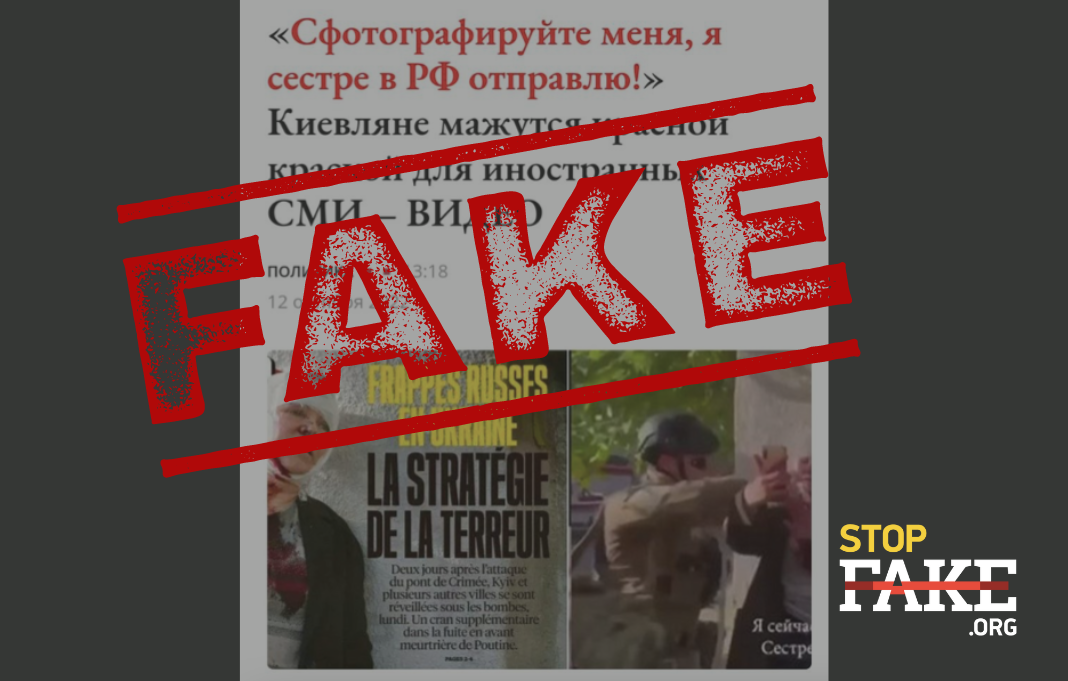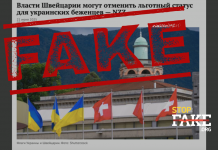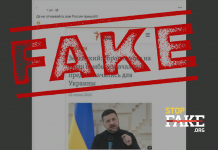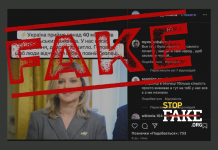Kremlin media once again tried to downplay the ramifications of the massive missile strike on Ukrainian territory on October 10. The propagandists resorted to their favorite old technique of claiming the photos were “staged,” the victims were “fake,” and their blood was “artificial.” But photographers’ and international journalists’ eyewitness accounts at the scene, as well as those of the victims, refute this Russian disinformation.
On Monday, October 10, early in the morning, as people were on their way to work and children were on their way to school, the Russian Federation launched massive strikes on various sites in Ukraine. According to Forbes magazine, the Russian army launched 84 cruise missiles and 24 unmanned aerial vehicles. Ukraine’s air defense managed to shoot down 43 missiles and 13 UAVs. The shelling killed 19 people and injured 105 with varying degrees of severity.
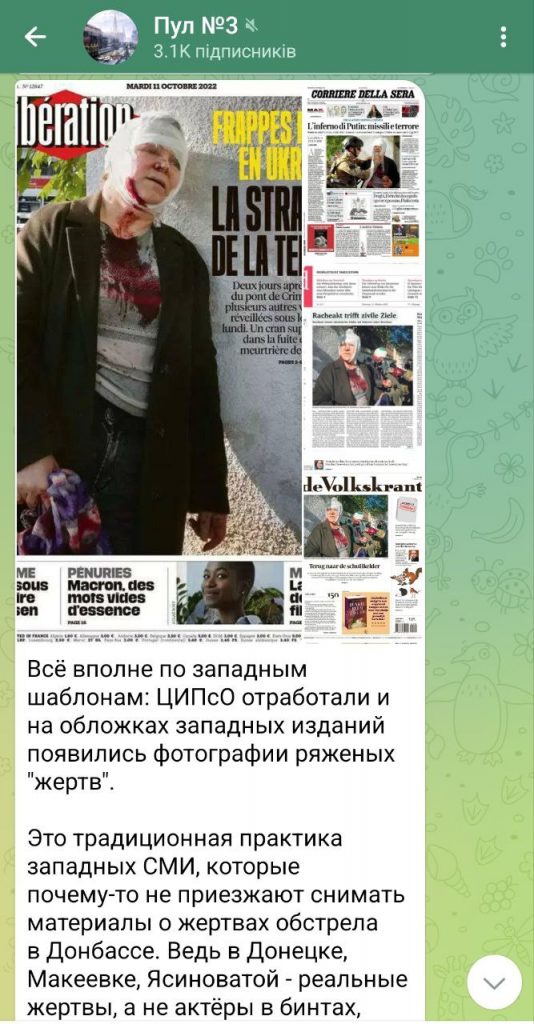
International journalists were reporting directly from the scene. Horrifying scenes from Kyiv hit the world media and shocked the global public. But pro-Kremlin propagandists cynically claimed the photos to be “staged” and called the victims actors “drenched in artificial blood.”
Claims that missile strikes victims were “staged” were first circulated in a tweet by someone named Maria Dubovikova, who calls herself a “prominent independent analyst & media expert” and “The Russian”. She posted an image of a bloodied woman with a bandaged head, and a short video of the victim asking to be photographed. Dubovikova’s comment on the photo reads: “Production of dramatic photos for the Western media: Take a photo of me, Andrey Andreevich. I’ll take a selfie and will send it to my sister in Russia“.

Dubovikova’s tweet was noticed by Russian First Deputy Permanent Representative to the UN Dmitry Polyanskiy, who himself has actively disseminated anti-Ukrainian fakes. “Thank you, Maria for exposing the fakes in the making,” the Russian diplomat wrote on his Twitter feed.
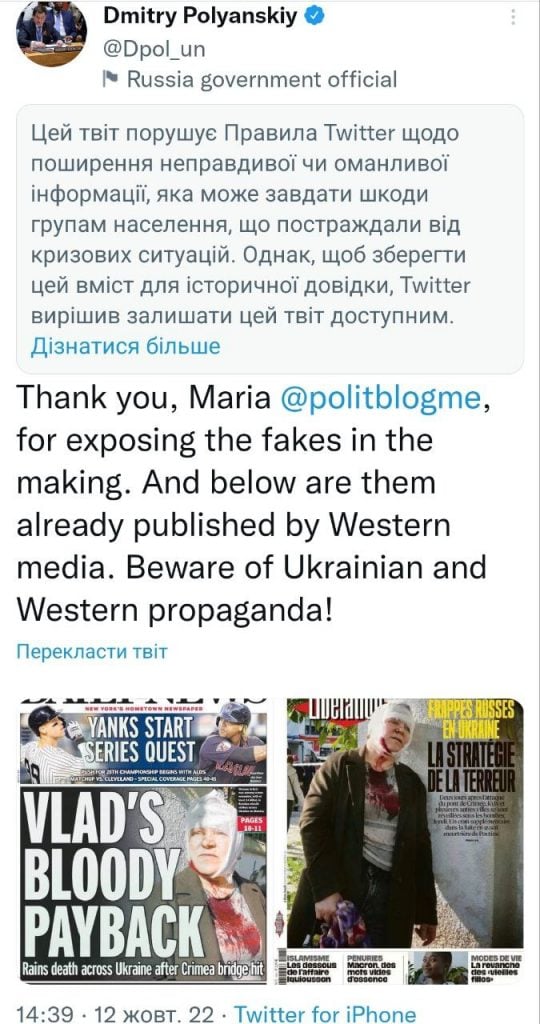
It should be noted that Twitter has marked Dubovikova’s and Polyanskiy’s tweets as violating the platform’s “rules on sharing false or misleading information that might bring harm to crisis-affected populations.”
One of the newspapers that published the photo of the injured woman is the French newspaper Liberation. After Dubovikova and Polyanskiy accused the woman in the photos of staging the scene, French journalists conducted an investigation, which proved the photos to be real and confirmed that the people in the photos and video had actually suffered from Russian missile strikes.
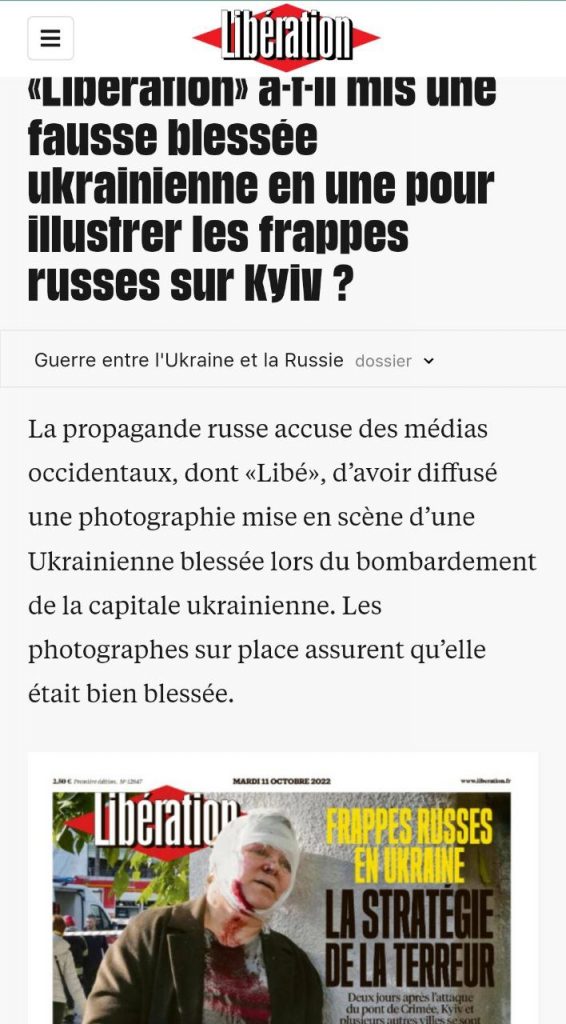
Liberation contacted the author of the cover photo, Efrem Lukatsky, who works for the American AP agency. Lukatsky confirmed that he shot the photo and video used by the Russian propagandists, and confirmed that people really “were injured by shards of broken glass, and the shards were scattered hundreds of meters around.” Lukatsky responded to accusations of staging: “All Russians and their supporters present all the horrifying videos and photos of victims of Russian troops, such as women and children killed, torture, etc., as fakes. There are no honest sources. Their journalism is not journalism, but propaganda.“
Liberation journalists also contacted other journalists and photographers who were at the tragedy scene, all of whom confirmed that this woman’s injuries were real and she wanted that fact documented.
The Ukrainian newspaper VGORODE Kyiv found the woman in the photos and told her story.
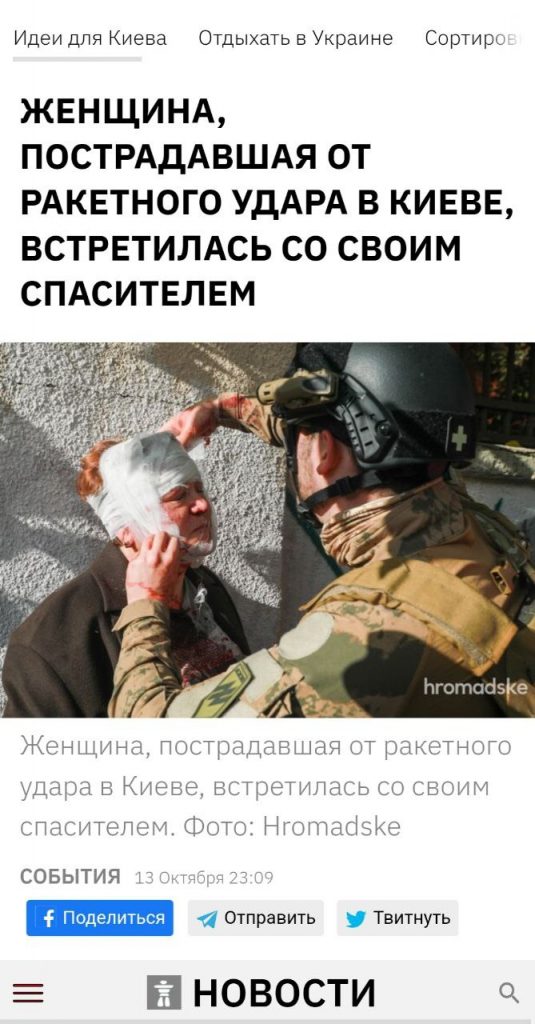
The victim’s name is Oleksandra Kiselyova. At the time of the Russian missile attack she was at work. When the air raid alarm sounded, together with her colleagues, she headed to the shelter, but did not manage to get there in time. An explosion occurred and damaged her office building. The woman managed to get out from under the rubble and came out into the street, she was disoriented and confused. She was bleeding, could barely stand on her feet, and did not know what to do. At that moment she was spotted by a volunteer named Oleksandr, who had just arrived with his team to help the victims of the missile attack. He calmed her down, bandaged her up and handed her over to the paramedics.
The phrase “Take a picture of me for my sister in Russia,” which Russian propagandists present as “proof” of the scene being staged, has a very simple explanation. The victim admitted that she has a sister who lives in Russia and who does not want to consider the fact that Russia is a terrorist state attacking and destroying Ukraine. Kiselyova wanted to send her sister a photo so she could see her wounds. Oleksandra painfully admitted that her sister knew what happened to her, but never called her.
Some Russian media reported that the “staging” with “false victims” took place on Volodymyrska Street in central Kyiv, which was also severely damaged by the Russian attack. But Hromadske’s video shows that the place where Oleksandra was injured is a completely different area – near the 101 Office Center Tower next to Kyiv’s Central Railway Station.
A photo in Volodymyr Zelenskyy’s Telegram channel also shows the office center being severely damaged as a result of the shelling.
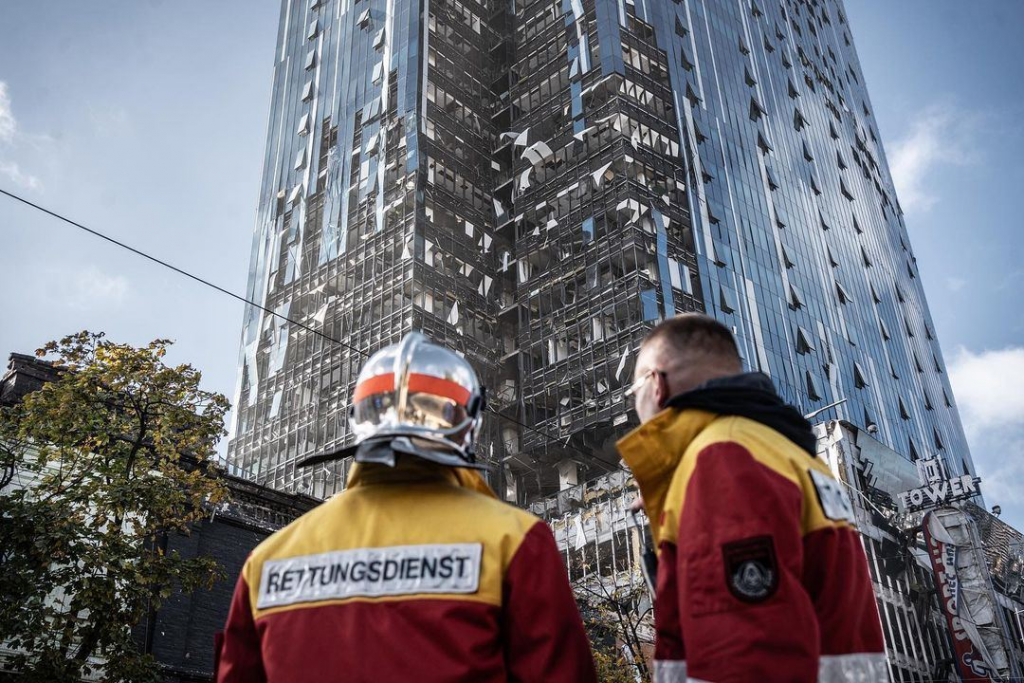
On October 10, Russian missiles struck a number of civilian targets and four thermal power plants in Kyiv alone. Six civilians were killed and 51 were injured.
Russia did not deny the attack on Ukraine, but described the assault as “a massive strike by long-range precision-guided weapons against Ukrainian military, communications, and energy systems.”


